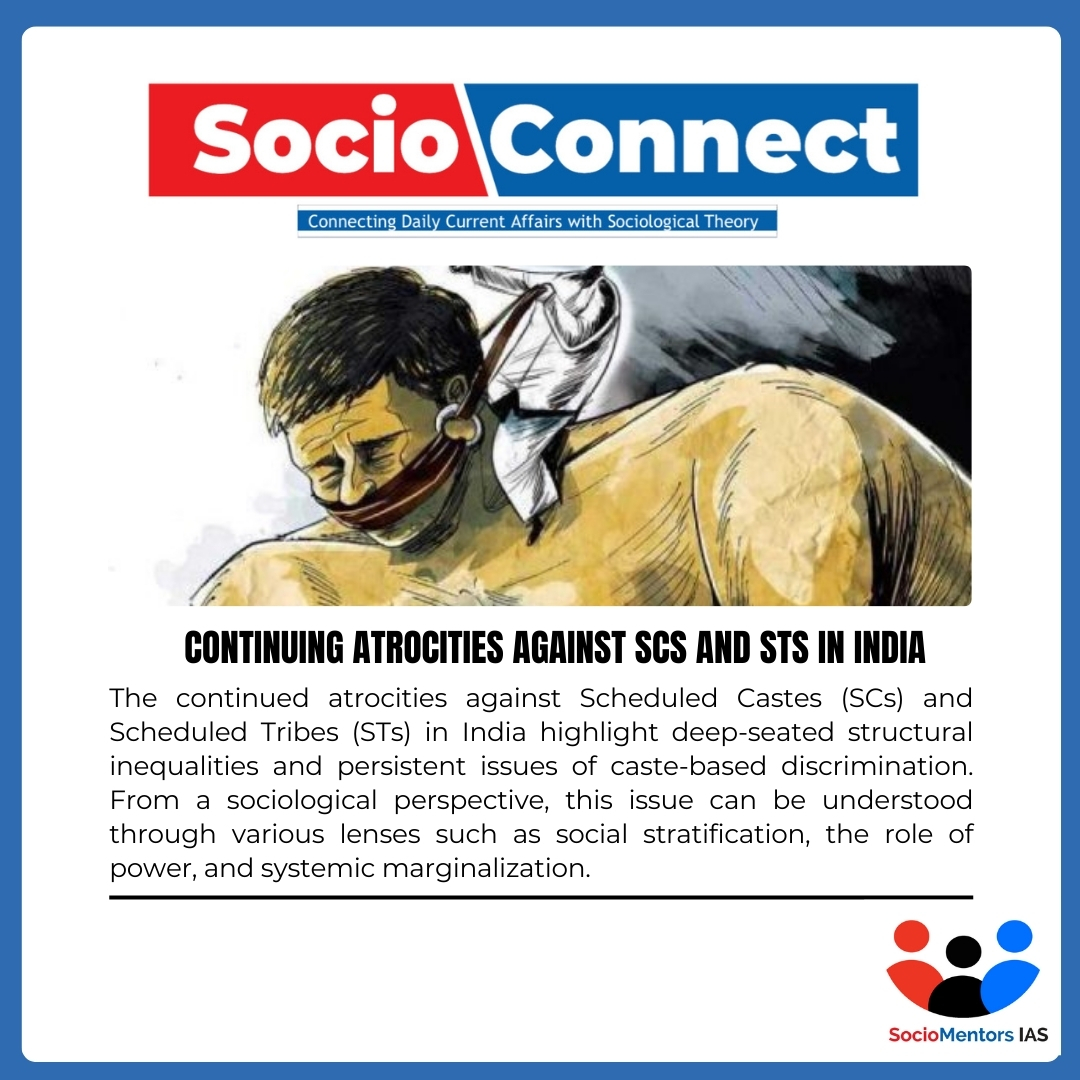Continuing Atrocities against SCs and STs in India
September 27, 2024
The annual report under the Scheduled Castes and Scheduled Tribes (Prevention of Atrocities) Act (PoA Act) for the year 2022, published last week, shows that crimes against those listed as Scheduled Tribes (ST) were also concentrated in 13 states, accounting for nearly 99% of the cases. Historically, Dalits and tribals were marginalized and excluded from decision-making processes, but over the past few decades, these communities have begun to challenge the status quo, demanding their constitutional rights, social dignity, and economic empowerment. This assertion often leads to a backlash from dominant castes, who see their historical privileges being eroded.
What Constitutes atrocities against SC/ST in India:
- Caste-based violence: Acts such as assaults, lynchings, and even killings are committed against SCs and STs, particularly by dominant caste groups. Crimes like Dalit women being sexually assaulted, or entire villages being attacked, are reported, especially in rural areas.
- Land conflicts: SCs and STs often face violent opposition when they try to claim their rights over land, particularly forest lands or government-allotted land for STs.
- Untouchability: Despite being constitutionally banned, untouchability still exists in many rural areas. SCs and STs are denied access to temples, water sources, public spaces, and are often segregated in schools and villages.
- Social boycott: Communities are sometimes socially ostracized if they assert their rights, with dominant caste groups enforcing economic and social sanctions.
- Bonded labour: Many SCs, particularly Dalits, are trapped in forms of bonded lab or due to poverty and landlessness, especially in agriculture and manual labour sectors.
- Denial of resources: Despite government schemes, SCs and STs often find it difficult to access basic resources such as jobs, loans, or education due to caste-based discrimination.
- Violence during elections: SCs and STs face intimidation, violence, and disenfranchisement during elections, particularly in areas where they challenge upper caste hegemony. Although there are reserved seats in legislatures for SCs and STs, their actual political power is often limited by the dominance of upper castes in political parties and governance structures.
Sociological Analysis of Atrocities against SC/ST
- Caste as an ideology: Dumont’s analysis of Homo Hierarchus show how caste operates as a pervasive ideology that goes beyond economic or political factors, shaping everyday interactions. Upper castes continue to view Dalits (SCs) and Adivasis (STs) as inferior, which contributes to the persistence of violence against them when they assert their rights or challenge traditional hierarchies.
- According to Ambedkar, caste is not just a cultural or religious institution, but also an economic and structural system of exploitation. SCs and STs are deprived of access to resources, land, education, and employment, keeping them in a state of perpetual poverty and vulnerability. This economic marginalization, compounded with social discrimination, results in frequent atrocities as they challenge the status quo.
- The concept of soft state by Gunnar Myrdal can also be applied to understand atrocities against SC and ST. A soft state often lacks the political will to confront entrenched power structures, such as the dominance of upper castes in rural areas. The soft state tolerates corruption, which leads to collusion between local elites, government officials, and law enforcement agencies. This corruption ensures that crimes committed against SCs and STs are not prosecuted effectively.
- From conflict perspective, the violence against SC/St often occurs when SCs and STs demand fair wages, assert land rights, or challenge exploitative economic relations, reflecting the intersection of caste and class oppression. As SCs and STs have gained access to education, jobs (through affirmative action), and political power, upper castes feel threatened and react with violence.
- Cultural Hegemony: Upper castes often control cultural institutions, including media, education, and religion, which normalize caste-based discrimination. The portrayal of SCs and STs as “inferior” or “dangerous” contributes to the justification of atrocities against them. Atrocities can be seen as a response to SCs and STs resisting upper-caste hegemony. When these communities assert their rights or challenge cultural norms (such as demanding temple entry, access to wells, or equal treatment), violence becomes a tool to suppress their resistance.
Despite the presence of strong legal frameworks like the SC/ST Prevention of Atrocities Act, the inefficacy of governance mechanisms and the culture of impunity allow atrocities to continue unabated. The persistence of violence and exploitation of SC and ST communities is a reflection of the state’s inability to challenge powerful elites and address deep-seated caste inequalities.



